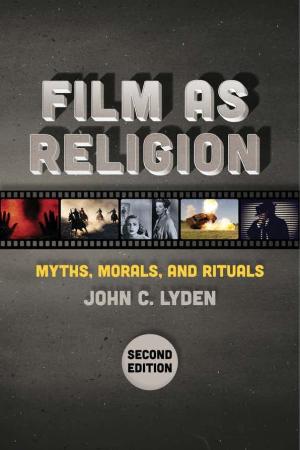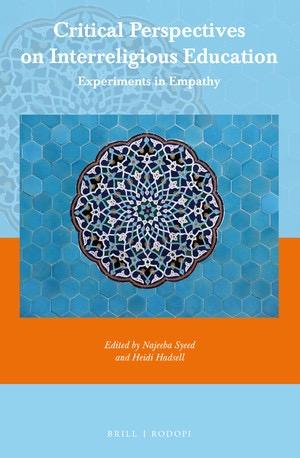Resources

My teaching style has always been a bit on the lighthearted side; I crack jokes, use ridiculous metaphors, draw inelegant pictures on the whiteboard and make my students guess what I’m trying to convey in an odd version of academic Pictionary. Being funny is a great way to keep students engaged! But now that my school, along with everyone else’s, has gone fully online for the duration of the semester, I’ve had to reframe my humor–what I usually think of as a useful teaching tactic, I now see as an indispensable tool for teaching effectively in a global pandemic. It’s already cliché to say that everybody’s stressed out by this health crisis, but the sheer variety of ways to be stressed is staggering, and my students seem to embody every one of them. I teach at a women’s college where traditional undergraduates learn alongside non-traditional working students; about a quarter of whom are parents. We’re heavy on the health sciences, so while lots of our undergrads are suddenly unemployed from their server and retail jobs, those who work in pharmacies, elder care, and hospitals are being begged to pick up extra shifts. My classes are an eclectic combination of the desperately bored and the profoundly overworked. The only thing they all seem to have in common is how badly they need a laugh right now. I can’t cure their anxiety, but I can offer them a momentary opportunity to forget about it while they’re smirking at one of my quips. These little breaks are a big part of how we can cope with our new normal. I usually rely on reading a room for my jokes, so I’ve had to get more creative. I’m terrible at creating dynamic PowerPoints, for example, and I’m now using them for nearly every lecture. To keep things interesting, I insert snarky comments into my slides making fun of my own dismal formatting and don’t call attention to them while I present, leaving them like Easter eggs for the attentive watcher. When I require Zoom meetings, I ask every attendee if they have a nearby pet or small child they can put on screen for the rest of us to coo over before beginning our discussion. I’m still teaching loads of content in the midst of all these less-serious moments, but it’s obvious that the content flows better when I make space to be a little silly. When my students pop up on webcam to talk about their upcoming papers, they’re visibly tense–this disappears almost immediately when I say that I do want to talk about their paper, but I also insisted on this meeting because I’m lonely and want to be reminded that other humans exist. They smile, I smile back, and for a second or two, they feel better–and then are better able to listen and learn. Beyond benefiting my students, prioritizing humor also helps me look forward to teaching and gives me a hint of that refreshing energy I used to get from being in the classroom with so many personalities. Staring at my laptop for hours on end is a little more bearable when I’m also thinking about whether there’s a way I can insert a picture of a chicken into my presentation so it’ll flash on screen at random intervals while I’m talking. Teaching is a haven for me amid my own apprehension, and it feels even more purposeful when I can try to make it haven for my students too. There is no one teaching style that will spell perfect success in this tumultuous time, but for even the most serious professor, I urge you–try for some silliness! Change your Zoom background so you look like you’re lecturing from the middle of the zombie apocalypse, offer pictures of your pet as a reward for students completing required tasks, come up with a rude nickname for your online learning platform (I like to refer to Canvas[1] as “that jerkwad”) and use it whenever part of your haphazardly constructed course site doesn’t work the way you thought it would. Give yourself the gift of being a little ridiculous, and you’ll find that your students’ attitudes–and their work–will benefit from the break. [1] No offense to Canvas. It is a beautiful, elegant system, even when I can’t for the life of me figure out why it keeps taking assignments off of the student to-do list.

The first edition of Film as Religion was one of the first texts to develop a framework for the analysis of the religious function of films for audiences. Like more formal religious institutions, films can provide us with ways to view the world and the values to confront it. Lyden argues that the cultural influence of films is analogous to that of religions, so that films can be understood as representing a “religious” worldview in their own right. Thoroughly updating his examples, Lyden examines a range of film genres and individual films, from The Godfather to The Hunger Games to Frozen, to show how film can function religiously. (From the Publisher)

From the Women’s March in D.C. to #BlackLivesMatter rallies across the country, there has been a rising wave of protests and social activism. These events have been an important part of the battle to combat racism, authoritarianism, and xenophobia in Trump’s America. However, the struggle for social justice continues long after the posters and megaphones have been packed away. After the protests are heard, how can we continue to work toward lasting change? This book is an invaluable resource for anyone invested in the fight for social justice. Welch highlights examples of social justice work accomplished at the institutional level. From the worlds of social enterprise, impact investing, and sustainable business, After the Protests Are Heard describes the work being done to promote responsible business practices and healthy, cooperative communities. The book also illuminates how colleges and universities educate students to strive toward social justice on campuses across the country, such as the Engaged Scholarship movement, which fosters interactions between faculty and students and local and global communities. In each of these instances, activists work from within institutions to transform practices and structures to foster justice and equality. After the Protests Are Heard confronts the difficult reality that social change is often followed by spikes in violence and authoritarianism. It offers important insights into how the nation might more fully acknowledge the brutal costs of racism and the historical drivers of racial injustice, and how people of all races can contain such violence in the present and prevent its resurgence in the future. For many members of the social justice community, the real work begins when the protests end. After the Protests Are Heard is a must-read for everyone interested in social justice and activism – from the barricades and campuses to the breakrooms and cubicles. (From the Publisher)
Conventional and online teaching are two options, and competency based theological education is a third option. Adding competency based theological education is a viable response to the COVID crisis in education. Dr. Nancy Lynne Westfield hosts Dr. Kent Anderson (Northwest Baptist Seminary, British Columbia).

Moving abruptly online during the middle of a semester is tough. It requires translating on-ground pedagogies for online environments very quickly. Though, as tough as it is for instructors, we know that this transition is tough for students as well. Students need consistency; they need reassurance and predictability. Students need more than just online course content, they need the full pedagogical weight of the institution behind them. They need the support of institutional mission. Each accredited college or university has one, an institutional mission. This mission, if well implemented, not only structures the institution but also gives meaning to the academic life of the institution. It characterizes the type of community that the institution forms. Mission gives institutional on-ground education a sense, a feel, that is distinctive to that institution. It promotes an ethos and a directionality unique to the institution’s culture. This is particularly the case for confessional academic institutions for whom mission has religious significance. It is now more important than ever for higher education institutions to provide consistency to their students by communicating mission pedagogically in online environments, to keep students engaged with the institutions to whom they entrusted their academic careers. Consider three ways to accomplish this: Draw from institutional symbols. Symbols bring people together to form community, and institutional missions tend to be built on symbols distinctive to the college or university. Your online environment can be enlivened through the process of identifying what these symbols are and evaluating how these symbols can be pedagogically leveraged to invoke your distinctive institutional ethos and culture. Three types of institutional symbols are useful for consideration. 1) academic themes or virtues (such as “social justice,” “service,” “wellbeing,” “hospitality”) that characterize the institution’s expression of academic excellence 2) documentary symbols such as strategic plans, the mission statement itself, student codes of conduct, academic integrity policies, etc. 3) initiative-based symbols such as athletic or wellbeing programs, community engagement programs, institution-based institutes, etc. Institutional symbols are particularly helpful when they are diverse. Diversity gives students multiple entry points into the communal life of the college or university and allows them to express themselves in a way that is most comfortable to their experience. What are some of your institution’s symbols? How can these be incorporated into your online pedagogy to create a more supportive learning environment? How are these symbols diverse? Invite the wider campus community into learning spaces. Modeling mission in online learning environments is one way to communicate the mission to students. This can be done by drawing from those campus-based resources that were able to be moved online. For example, if your college or university librarian is now online, inviting him or her into the online learning space helps students to reconnect with the broader campus community supporting their learning. Similar assistance can be gained from resources such as guest lecturers, diversity and inclusion initiatives, campus ministry, career services, etc. When the larger campus community provides support according to the institution’s mission, the community models its mission for students and expresses a sensibility consistent with their prior on-ground educational experiences. Do you have members of the wider campus community whom you can draw from? How can these persons contribute to your course? How do they model the institutional culture? Engage students in practicing the mission in the online learning environment. The mission is not something that institutional employees “give” to students, but something that the institution as a community enacts together. Once missional symbols and modeling are pedagogically incorporated into their curricula, students are initiated into the mission as active participants. As participants in the mission, it is important for students to develop their own creative take on the mission and what it means in their lives. Formative and summative assessments oriented towards evaluating student appropriation of the mission can help students practice the mission and help them come together as an online community. What could the institutional mission mean to your students? How do students exemplify the mission in their relationships with one another? How can you help strengthen their relationships through the institutional mission?

The editors of Experiments in Empathy: Critical Reflections on Interreligious Education have assembled a volume that spans multiple religious traditions and offers innovative methods for teaching and designing interreligious learning. This groundbreaking text includes established interreligious educators and emerging scholars who expand the vision of this field to include critical studies, decolonial approaches and exciting pedagogical developments. The book includes voices that are often left out of other comparative theology or interreligious education texts. Scholars from evangelical, Muslim, Catholic, Protestant, Jewish, religiously hybrid and other background enrich the existing models for interreligious classrooms. The book is particularly relevant at a time when religion is so often harnessed for division and hatred. By examining the roots of racism, xenophobia, sexism and their interaction with religion that contribute to inequity the volume offers real world educational interventions. The content is in high demand as are the authors who contributed to the volume. (From the Publisher)

I teach biblical/theological studies. Each semester, I seek to guide students toward a deeper understanding of my conclusions concerning the major theological points of the Old Testament. I teach them that, as a result of sin, the world in which we live is not the world as God created it to be. The world is “broken.” However, the amazing story of the Old Testament shows us that God, despite the sinfulness of humanity, is making a way for humanity to be reconciled to him. The brokenness of this world is the primary reason we find difficulty present in our lives on such a regular basis. The story of the Old Testament teaches us that God uses these various kinds of difficulties to command humanity’s attention so that they turn their hearts toward him in dependence. My desire as a professor of the Old Testament is to find real connections to my students’ lives so that the Old Testament is not viewed as merely an ancient book, which has no real value to their contemporary world. And every semester, it is a battle because most of them are simply not old enough, nor do they have the life experiences that are sufficient enough, to lead them to more deeply understand the powerful truths of the Old Testament. Outside of the minor irritations of life, the majority of the freshmen or sophomore students in my courses lack that which would lead them to truly understand the theological points I am trying to make and, therefore, they can lack an interest in making the necessary connections. They still feel a little invincible and at the top of their game. Enter our global pandemic. I could not ask for a better “soft ball” to be thrown at me. It is a perfect scenario for the teachings of the Old Testament to come alive. This global pandemic has created the opportunity to openly discuss the issues confronting our world, and even the issues that confront my students, with the goal of connecting all of it to the profound theology of the Old Testament. Every situation this global pandemic brings into their lives becomes a special opportunity for them to understand the deeper realities of living in this world as we know it and all of its subsequent difficulties. Even if it does not touch their own lives in meaningful ways, they are bombarded with constant news updating them on the tragedies that other people in this world are up against. They feel it. And they are moved by it. As numerous emotional stories flow through various information platforms, it has an impact on them, making them more prepared to listen . . . and to think. So, my responsibility as a professor is to take full advantage of a crisis that I could not have planned. For my teaching, it is truly the “perfect storm” for the application of my course content. With the emergence of this global pandemic, my class is more interested in engaging the focus of my teaching. And they will be the better for it. Of course, this causes me to reflect on what might be less obvious in the everyday events of our world, which, if properly utilized, could create the same opportunity for my students to impacted. Perhaps, as a teacher, I have grown somewhat lazy in my attempts to connect the dots for my students. This has led me to think more deeply about the way I approach my course lectures. Consider the many issues that potentially confront my students on a daily basis: • At a private Christian liberal arts university, costing around $40,000 per year, this may not be an issue for my students, but one cannot help but be aware of the persons who have made a bus stop their home or walk down the street pushing their shopping cart full of their life’s possessions or who scrounge around restaurant trash cans in search of food. • Sex or human trafficking. It is difficult to believe that either sex or human trafficking could be happening in our neighbor’s home across the street or in an apartment complex in close proximity to our home, but it is possible. These “invisible” people may be closer than we think. It is a horrible issue in our world, and we can put it out of our minds. • Drug/alcohol abuse. More people will die of drug abuse in the USA than will die of this global pandemic in the year 2020. Drug abuse wrecks families, tears apart marriages, and leads to financial ruin. Students have more than likely seen the impact of this issue in one way or another. My point is that, although these issues may not directly impact my students’ lives, the global pandemic might not either. But, unlike the global pandemic, these other issues exist continuously in the world which my students and I inhabit. Oftentimes, these issues become background noise to our comfortable little worlds, but they are there. My job as a teacher is to work harder to make these connecting points when my students might be having difficulty making connection on their own. Because of this, I am thankful for the global pandemic. I know that my subject matter, the theology of the Old Testament, made it fairly easy for me to make the connections between course content and this global pandemic, but I assume that, with a little bit of thinking, you can do the same. And, if you do, it will make your course content come alive and your students will be better able to draw value from the content of your course. And, if we can do it with a global pandemic, then I bet we can do it better in the situations of everyday life. I encourage you to go for it!

The previous blog in this series focused on “long shot” (“big picture”) editing, specifically, revision tasks related to changing scenes and cutting. This final blog in the series zooms in to “medium-shot” and “close-up” editing. I realize that not all preachers have time to focus on revisions every week. While I cannot offer extra time, I can offer recommendations from filmmakers to preachers who have only 30 or 45 minutes to revise their sermon prior to Sunday morning. Medium-Shot Revisions Choose one major move/section of the sermon and focus on setting the scene with vivid language that sparks a variety of senses. The preacher does this by first visualizing the scene and providing a “thick description.” Filmmakers can be helpful guides since they make hundreds of choices in order to provide scenes that create the desired impact on the viewers. Looking carefully at their craft can hone the preacher’s skills for description. Try this exercise: Choose a scene from a favorite film. Press pause and write your responses to the following questions. Where is the scene? How do you know? What objects appear in the scene? What details give you clues about the characters in the scene? What is the major color scheme in the scene? What mood does it create? What do you think happened just prior to this scene and what is likely to happen after? What in the scene involves your hearing? your sense of smell? Now go back to the major move in the sermon and describe your scene using the same prompts. This process helps you visualize the scene so that you can describe it in a way that helps your hearers visualize it . . . without a screen. Writer Janet Burroway summarizes this well: “The first requisite of effective setting is to know it fully, to experience it mentally; and the second is to create it through significant detail.”[1] One caveat: refrain from getting carried away with details that don’t actually advance the main trajectory of the sermon. In other words, not everything from the exercise will appear in the sermon. Keep only those descriptors that move you to the next section. Close-Up Revisions We now zoom in on individual phrases and words. The art of choosing just the right word is not lost on the preacher. In fact, sometimes we agonize over just the right word. I would like to recommend that preachers spend time on the particular phrases that serve as transitions from one major move (section) to the other. Once again, films can assist. Take a segment of the film you engaged above and watch the film until you’ve identified two to three scene changes. Once you’ve done that, take a closer look at the transitions themselves. How does the filmmaker guide us from one scene to the next? Are there hints in the previous scene that we will be moving to a new scene? Or, is the scene change abrupt? If so, why? What effect does an abrupt scene change have on a viewer? Once you’ve engaged the transitions in the film, return to your sermon draft to analyze its transitions using similar questions. The first step is to make sure that there are transitions. Second, identify the roles the transitions play. In his book, The Witness of Preaching, homiletician Tom Long suggests that connectors (his word for transitions) accomplish four communication tasks: provide closure for previous segment indicate how upcoming section is related to previous anticipate the content of the next section helps listeners adopt a stance Finally, be creative and not clichéd. There are common transitions that belong specifically to the genre of sermons, for example, “In today’s gospel reading . . .” You’ve heard it. You’ve said it. But why not be more creative, especially since when you begin to talk about Peter, we know you are referring to the section of scripture that was just read. Instead, if you are transitioning from a contemporary story to something that happened with Jesus and disciples, try this: “We weren’t the first to be in awe of Jesus’ capacity to calm the treacherous seas of life. The disciples saw it first-hand . . .” Again, while I cannot gift preachers extra time, I hope these recommendations, gleaned from the wisdom of filmmakers and their work on the screen, might at least offer some editing possibilities if and when preachers find they have extra moments once they’ve got their “rough cut” on the page. [1] Janet Burroway, Imaginative Writing: The Elements of Craft (147).
School campuses and classrooms have become ghost towns. What has the pandemic crisis done to all of education. Crisis is calling us to think creatively about the need for communal epistemologies. Dr. Nancy Lynne Westfield hosts Dr. Kenneth Ngwa (Drew Theological School).

When I talk to people about dialogical learning, they often reply, "Yes, we have great discussions in my class." But discussion and dialogue, as learning methods, are different things. And then there's conversation. Conversation too can be a sound learning method in formal theological education. Conversation Theory, developed by Gordon Pask, originated from his work in cybernetics and attempts to explain learning in both living organisms and machines. Pask's fundamental idea was that learning occurs through conversations about a subject matter make knowledge explicit. Conversations can be conducted at a number of different levels: natural language (general discussion), object languages (for discussing the subject matter), and metalanguages (for talking about learning/language). In order for conversation to facilitate learning, Pask argued that the subject matter you are teaching should be represented in the form of entailment structures, that is, showing the relationship between two sentences where the truth of one (A) requires the truth of the other (B). The critical method of learning when using conversation theory is "teachback" in which one person teaches another what they have learned. According to Pask there are two different types of learning strategies in conversation: serialists who progress through an entailment structure in a sequential fashion (as in a story narrative structure), and holists who look for higher order relations. The suitability of Conversation theory to theological education is self-evident. Conversation theory, for example, is applicable in a formal theological education context as a process for learning in supervised ministry. Through directed conversations students learn from their experience, and from peers, as they interact to make explicit what they are learning in their ministerial contexts. Conversation theory is a suitable process for the integration of concepts learned in the academic context (the classroom with a subject-matter focus) and their praxis in the supervision context. Conversation theory can be applied to solicit deeper and explicit learning from an immersion experience in a different cultural context. The three pedagogical principles in conversation theory are: To learn a subject matter, students must learn the relationships among the concepts. Explicit explanation or manipulation of the subject matter facilitates understanding (e.g., use of teachback technique). Individuals differ in their preferred manner of learning relationships (serialists versus holists). One advantage of the online asynchronous learning environment is that the conversation "slows down," and this allows the instructor time for analysis of student responses and fosters more intentional pedagogical responses that promote deeper dialogue and conversation. To learn more about conversation theory, see Gordon Pask, Conversation, Cognition, and Learning (New York: Elsevier, 1975).
Wabash Center Staff Contact
Sarah Farmer, Ph.D
Associate Director
Wabash Center
farmers@wabash.edu